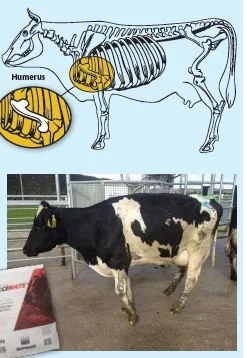Humeral Fractures over Mating
/As we head into October, we often see a second surge of spontaneous humeral fractures in heifers (the first period being around one week on either side of calving).
It is interesting that in affected farms it is very rare to see fractures occurring in both the peri-calving period and the pre-mate/mating period.
This would lead us to think that that nutritional intakes of calcium and phosphorus (and their ratios) in the 1-3 months before the fracture occurs may have an association.
We know that heifers that fracture in the pre-mate/mating period are generally in the top 20th percentile for production in their co-hort. It therefore makes sense that these will have the highest calcium demand, which could lead to thinning of the bones if calcium intakes are not supported.
Recent studies have shown that low liver copper values found in heifers with fractures may not be the cause of fractures but rather due to the effect of thinning bones. The body scrambles to fortify thin bones with copper containing proteins and enzymes.
Many of our diets are low in calcium and/or have a low Ca/P ratio. PKE, fodder beet, cereal grains and maize are all low, and this year we have measured some surprisingly low Ca percentages in pasture (possibly created by low pH soils).
For high producing herds the supplementation of lime flour in heifers (as well as cows), should be an essential practice until they get beyond peak lactation in November.





